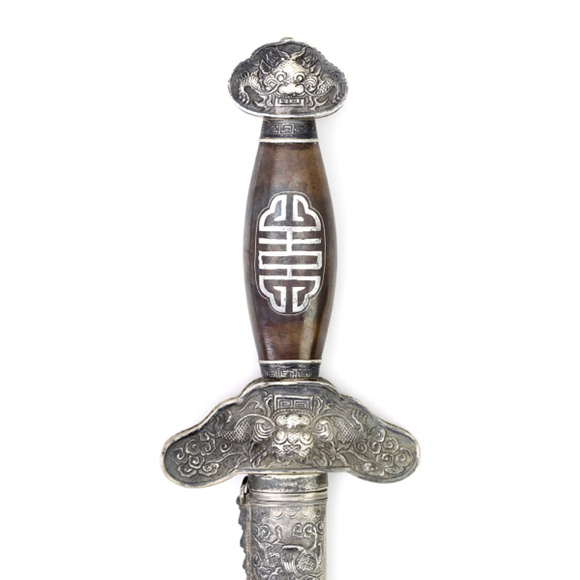A very rare ceremonial variety with copper scabbard inlaid with different alloys, and a brass blade.

72.6 cm / 28.6 inch
56.3 cm / 22.2 inch
forte 7 mm
middle 5 mm
widest part 29 mm
686 grams
1121 grams
Nguyễn dynasty, Vietnam.
Steel, silver, copper, niello.
Probably late 19th century.
General introduction
Ornate Vietnamese kiem (straightswords) and guom (narrow-bladed sabers) were carried by officers of the Nguyễn dynasty (1802 - 1945). Early Nguyễn emperor Minh Mang (ruled 1820 – 1841) claimed a Chinese legacy and sinicized his subjects, introducing Chinese clothing and an orthodox Confucianist model of state. He was well known for his opposition to missionaries, and his resistance to French involvement in the country. Eventually the French managed to take almost complete control of the country. Since 1885, all emperors were chosen by the French and had purely symbolic functions.
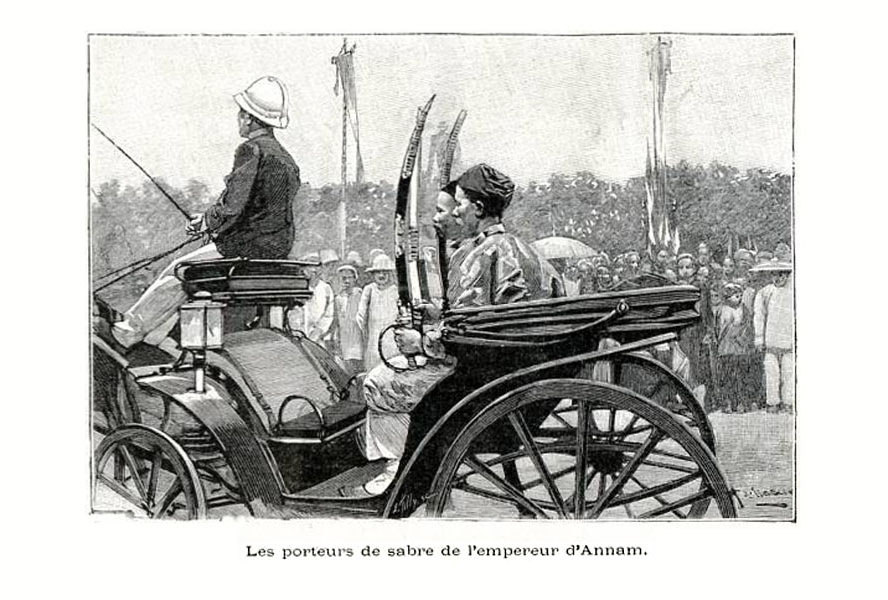
Vietnamese officer guom were carried in processions by the handle, with the tip pointing up. Because of this, its decoration is also positioned so it is best viewed with the tip pointing towards the sky.
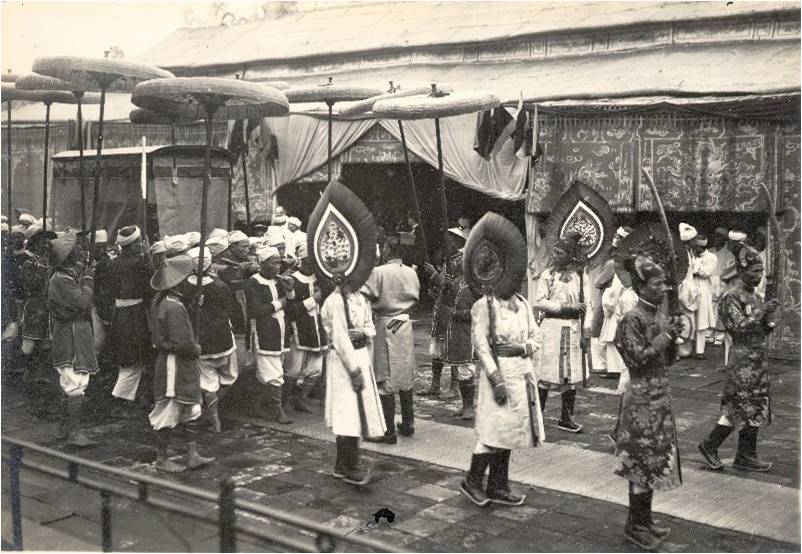 >
>
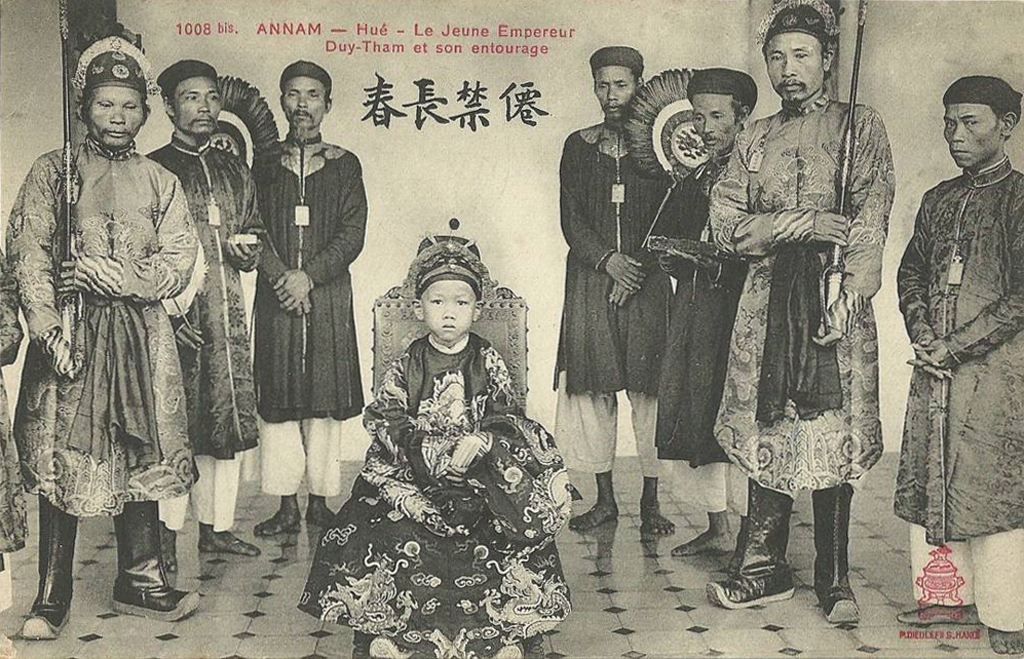 >
>
This example
Presented is a rare and high-end Vietnamese officer's saber, guom, with all-metal hilt and scabbard. It has a captured French blade that was ground down so it could be mounted in this typical Vietnamese style.
The all silver hilt with lion head pommel and silver D-guard. The handle skillfully inlaid with copper and niello, which is much more common in Cambodia than it is in Vietnam. The D-shaped guard with chased and chiseled designs of a dragon amongst clouds. The copper scabbard with three silver fittings. The silver of very good workmanship, chased, chiseled and stamped in high relief. The scabbard body is skilfully inlaid with silver and niello work. The pointy chape curls upward, in the style of some Ming swords shown on artwork.
All decorative work is precise and in good condition, with only very minor losses.
Symbols
The artwork throughout the piece is full of classical Chinese symbology, worthy of study on its own. The handle with floral motifs, cherry blossoms, stylized longevity symbols, and swastika fretwork.
The silver scabbard mounts are chased and chiseled with designs of mythical animals. From base to tip: Tortoise, Qilin, Phoenix and Dragon. The orthodoxy shows here; according to the ancient Chinese Book of Rites these are "the four spiritually endowed creatures".
The tortoise is sacred in China and is an emblem of longevity, strength, and endurance. Its domed shaped back symbolizes the sky, its belly the earth.
The Qilin is a fabulous creature of good omen. The symbol of longevity, grandeur, felicity, illustrious offspring, and wise administration. It only presents itself to mankind when a king of the highest benevolence sits the throne or when a sage is about to be born. It is said to be able to distinguish right from wrong, which is why it was the emblem of judges of the Chinese court.
The Phoenix is the Emperor of Birds, who is said to have appeared by the time Confucius was born. Now, it awaits the time when piece pervades the country, after which it will show itself again to man.
Last, of course, is the Dragon. The benevolent bringer of life, a creature of the skies and the deep seas. The symbol of life and of imperial power.
The copper scabbard body is meticulously inlaid with plants, flowers, and Taoist treasures. Each section has a different flower and a different set of treasures. I've been able to identify the peony and the prunus blossom. Among the Taoist treasures, we can identify among others the artemisia leaf, rhinoceros horn, and fan.
Conclusion
Such swords with all-metal inlaid hilt are rare and fairly sought-after. Those with all-metal scabbard to match are very rarely encountered. A rarity, in near-excellent condition.
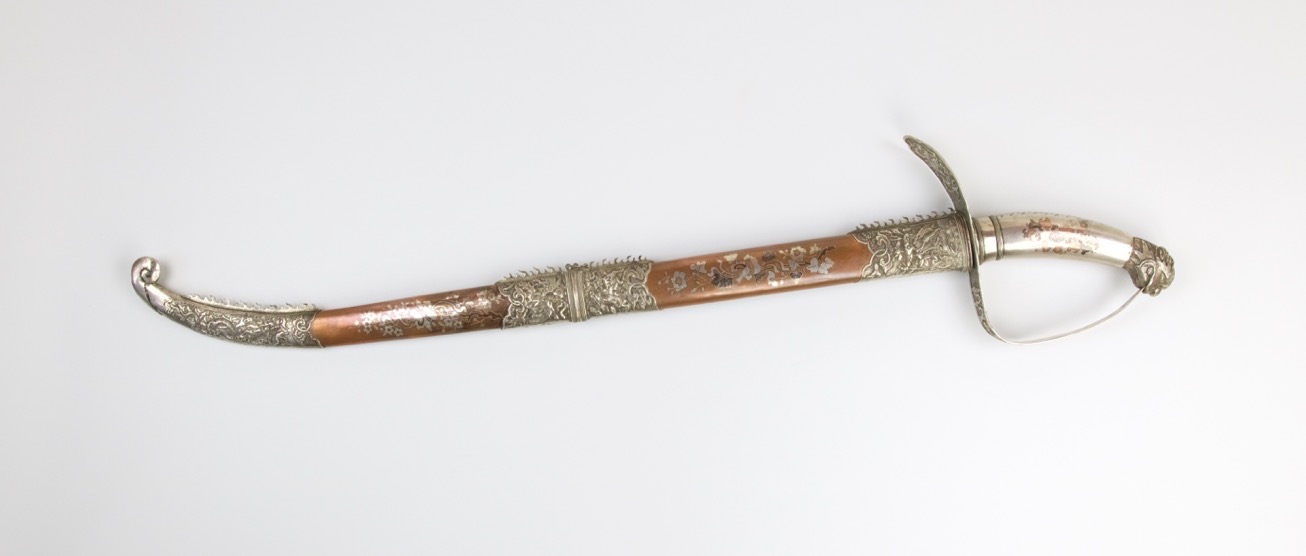





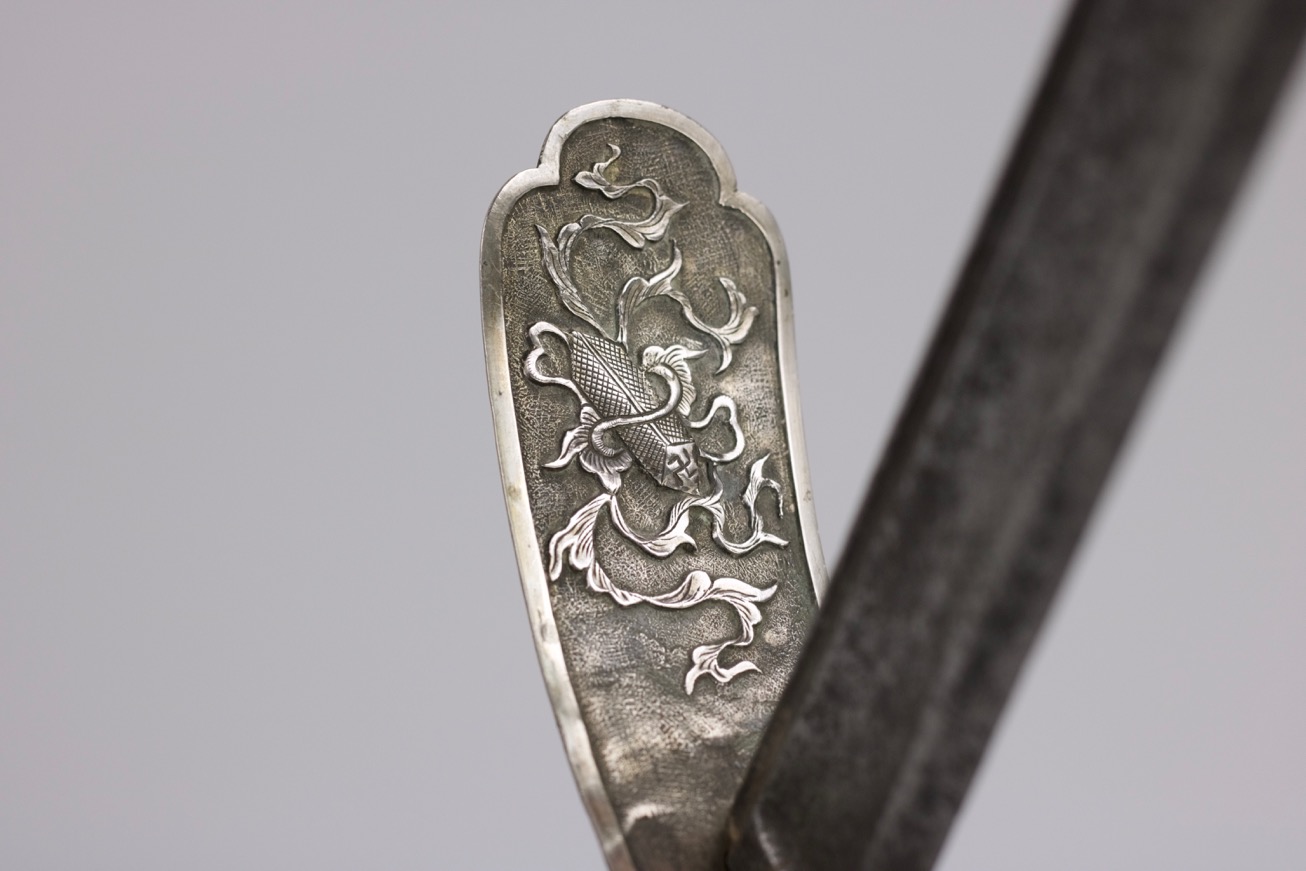

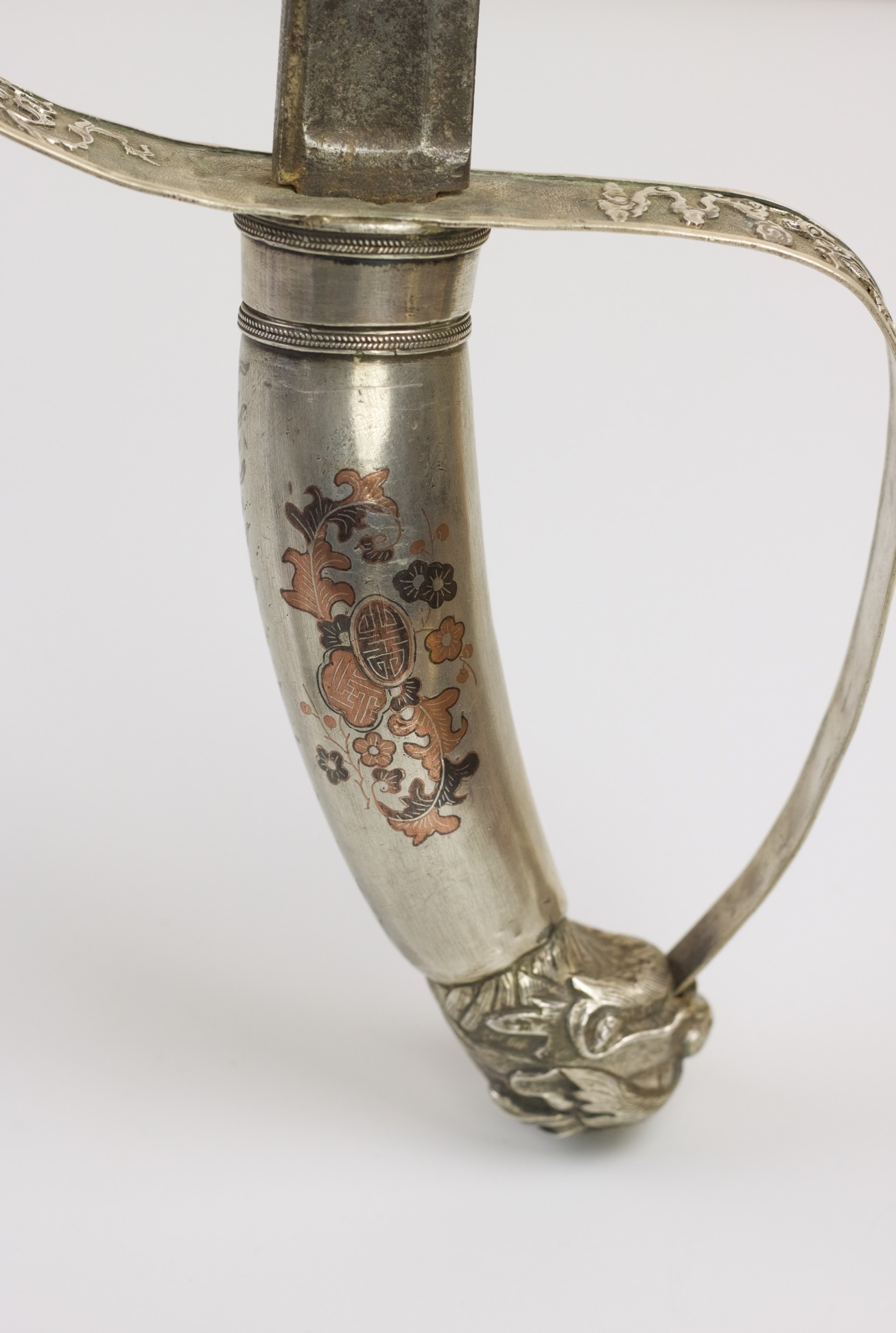
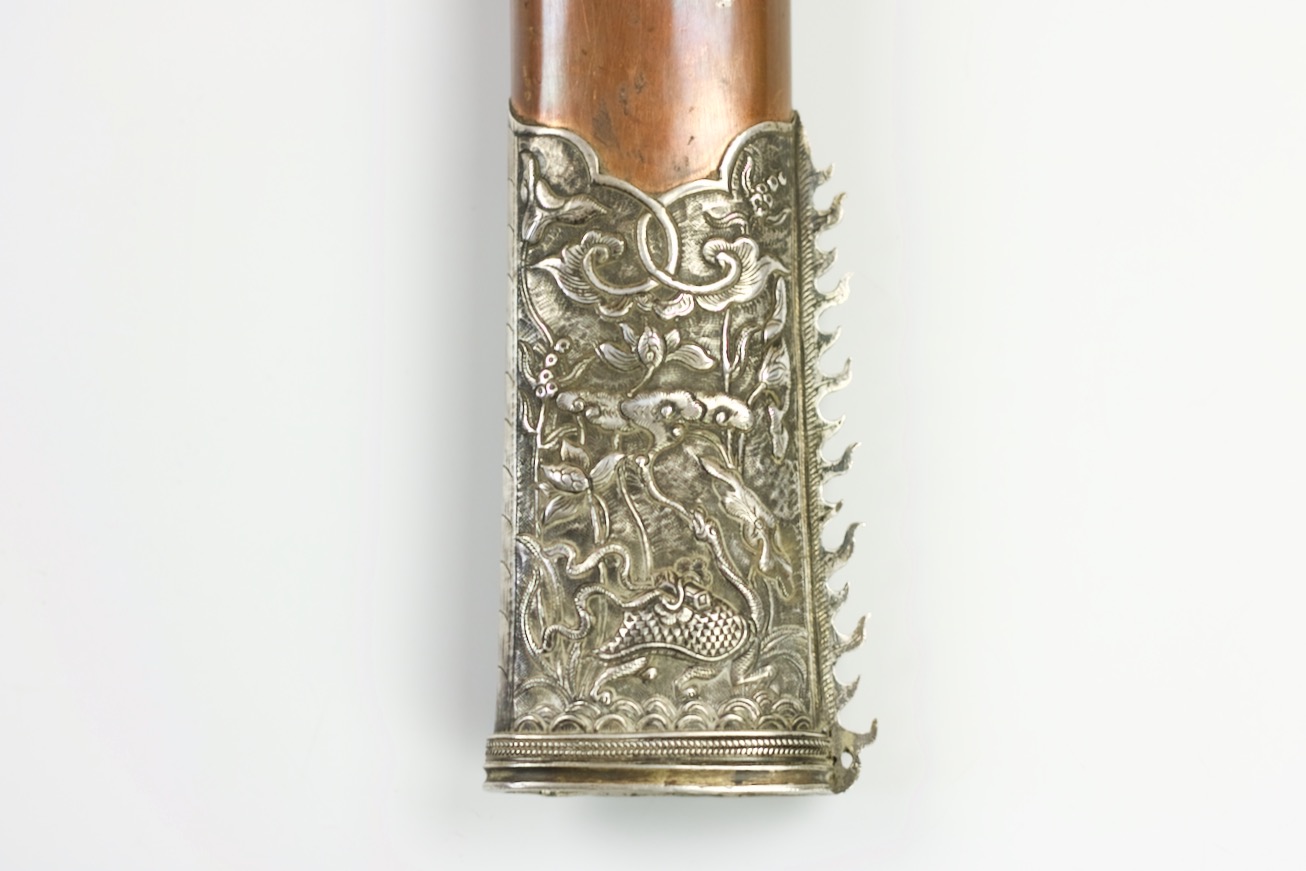



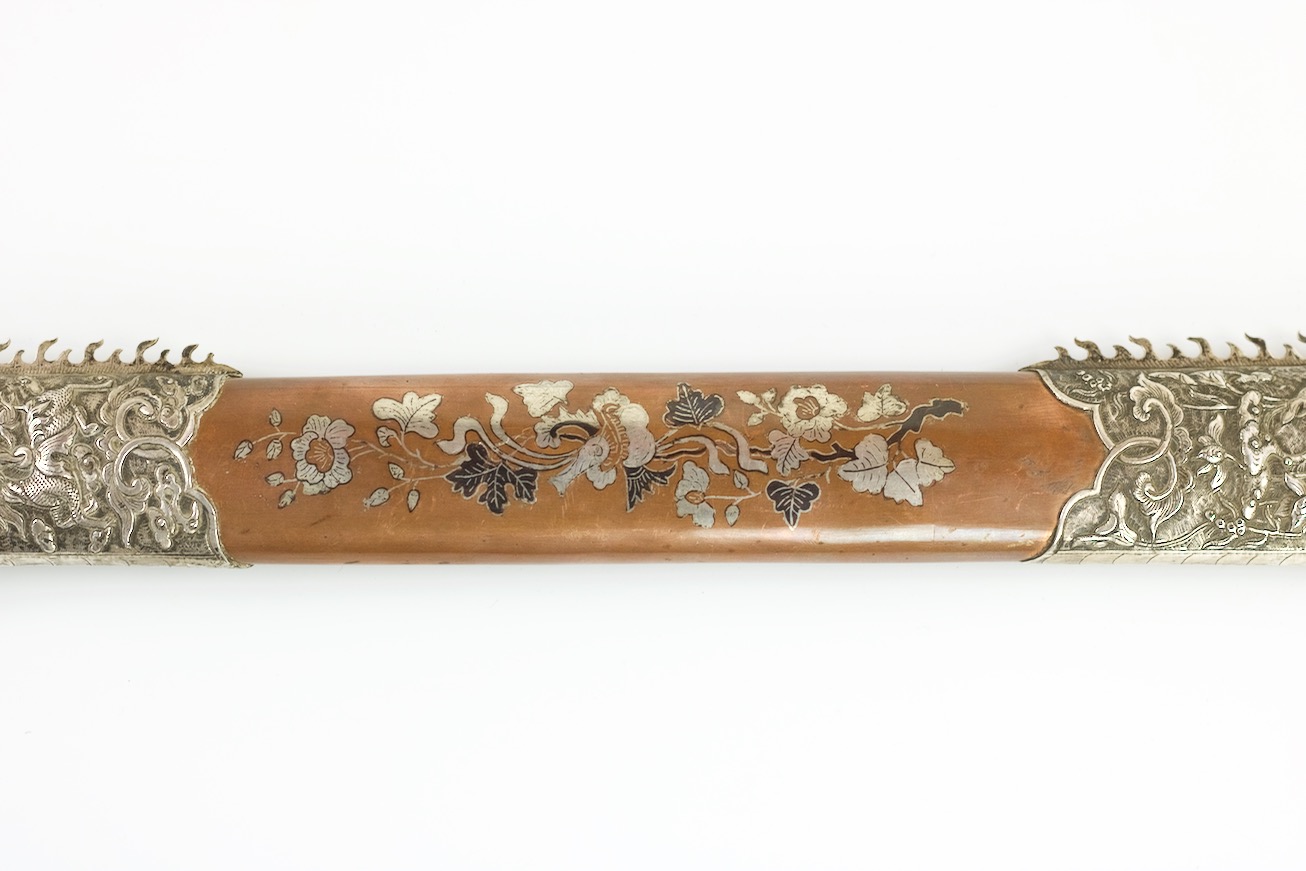









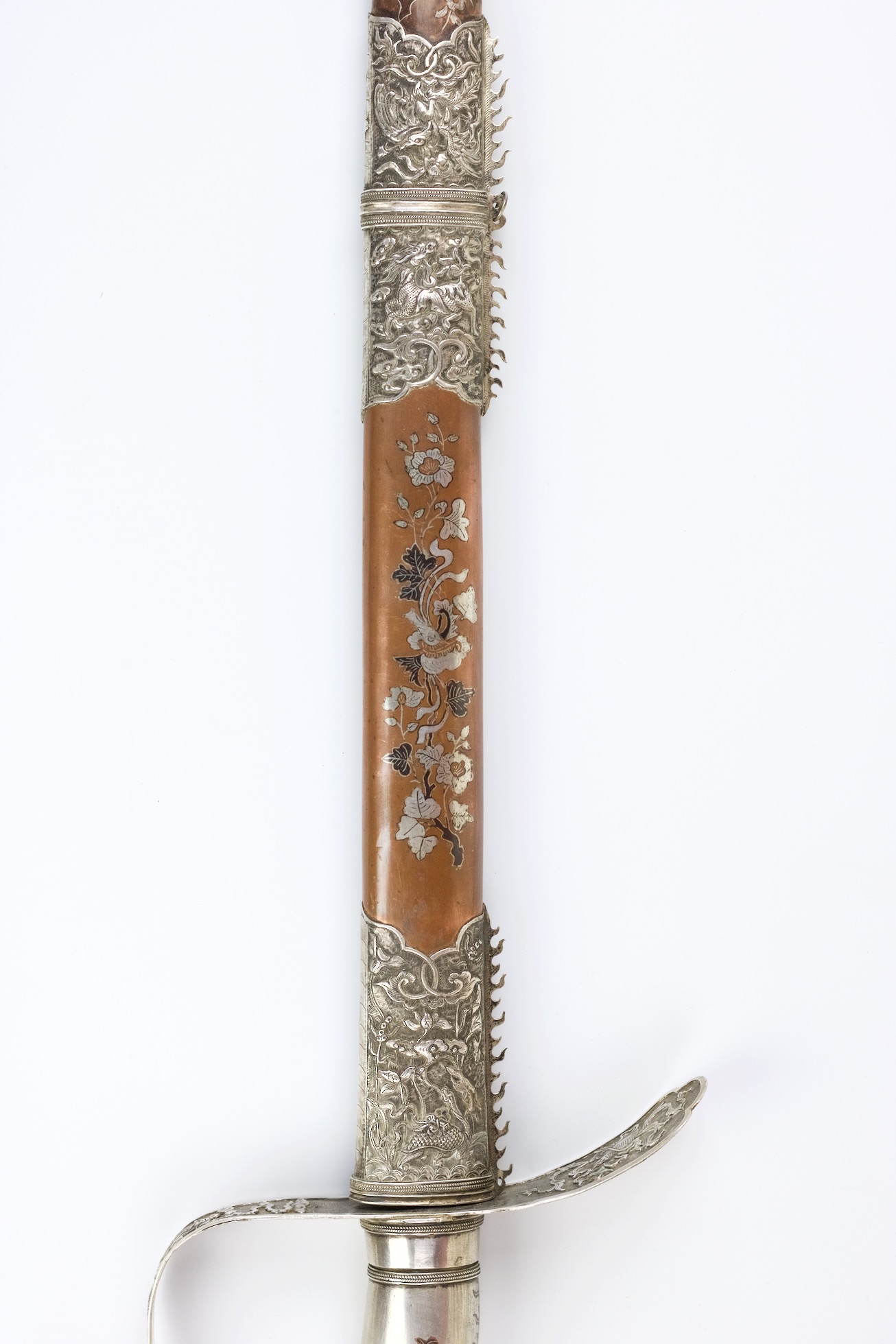

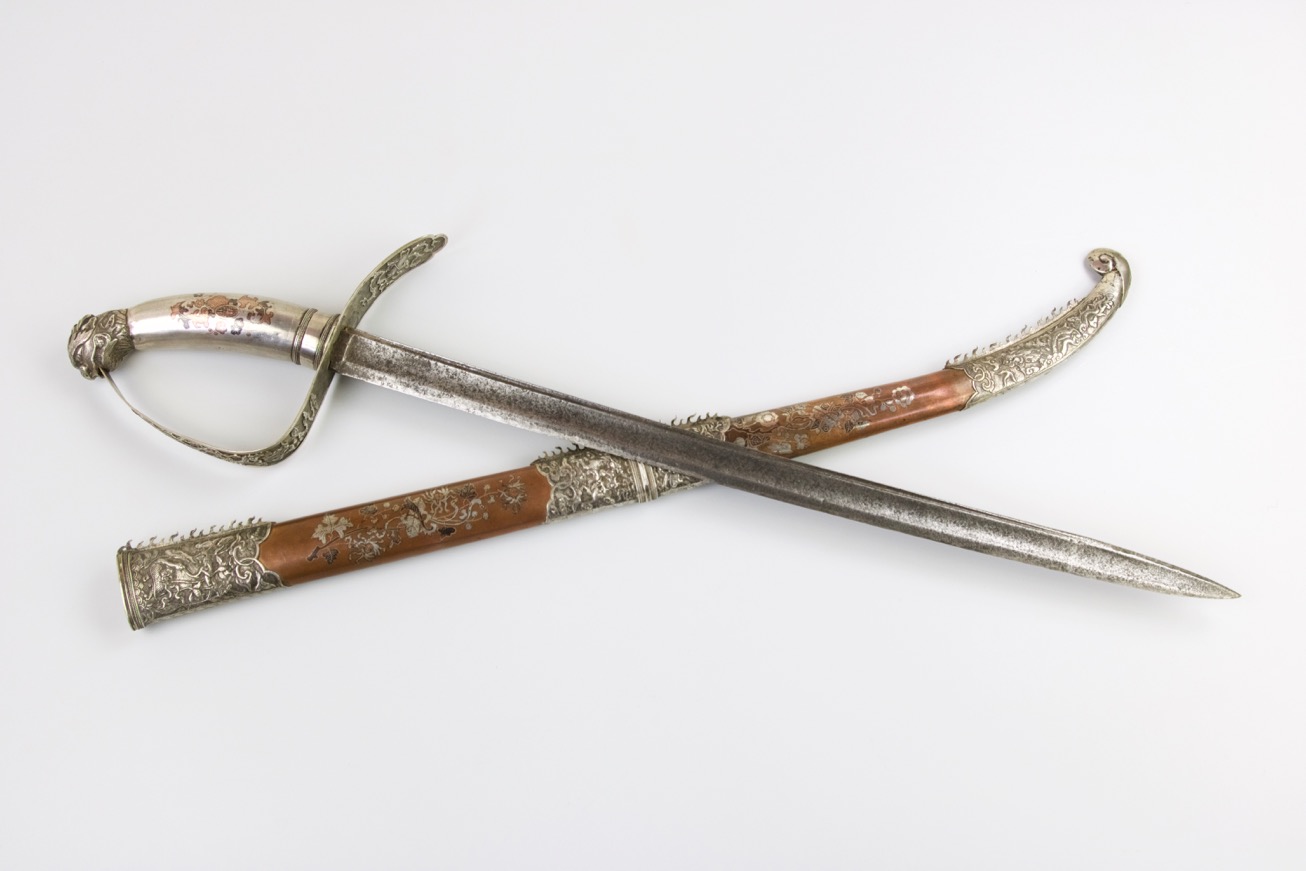
With a very fine Nepalese blade, but kard-like hilt and scabbard.
Early type with very shallow notch in the blade and little flare in the pommel.
20th century military khukurī with many different tools in its back pocket.

